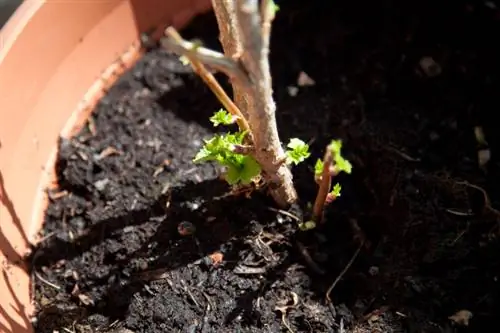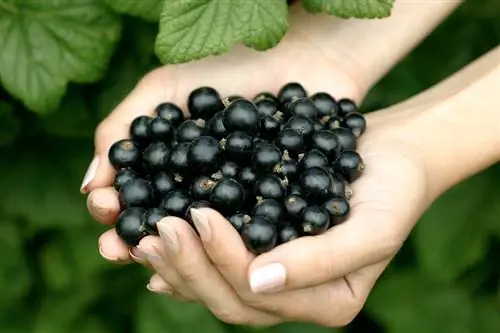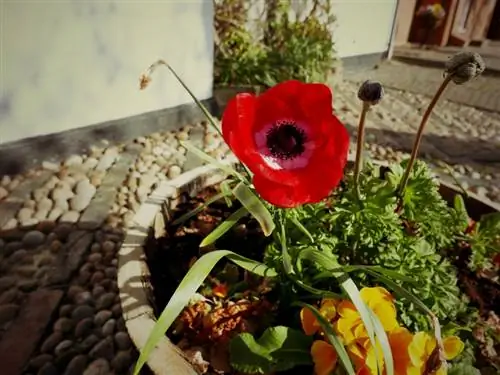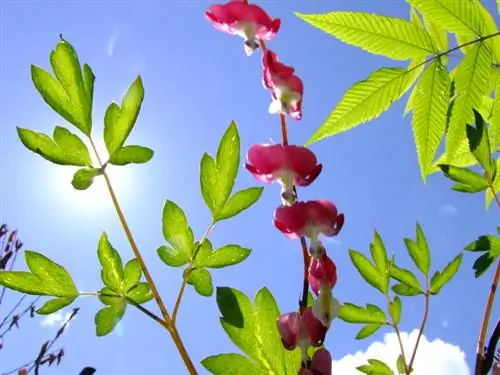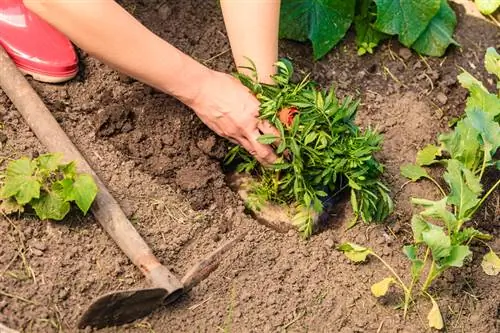- Author admin [email protected].
- Public 2023-12-16 16:46.
- Last modified 2025-01-23 11:20.
A very productive currant bush is in an inconvenient place when redesigning your garden? Then just replant it. But it's only worth it if the bush isn't too old.
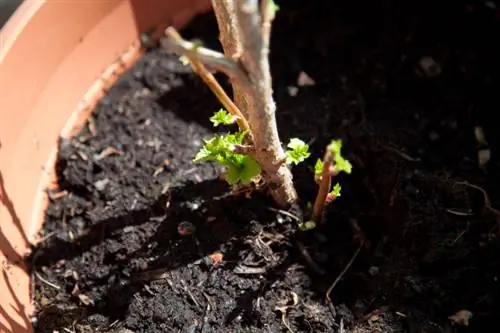
How to transplant currants successfully?
To successfully transplant currants, you should choose younger bushes and do so in autumn. Dig a new, spacious planting hole, enrich the soil with compost, dig up the bush, trim the roots and shoots, move it, fill it with compost soil, press it down and water it well.
Is it useful to transplant the bush?
Before you transplant currant bushes, think about whether the move is actually worth it. Bushes that are older than 15 years hardly bear any berries.
After transplanting, you can only harvest a few currants in the first few years. It takes two to three years until the currant is as productive as before it was transplanted.
You should therefore only move currant bushes if they are younger plants.
The best time to move
It is best to transplant your currant bushes in autumn. Then the soil is nice and moist and doesn't dry out as quickly.
If you wait until spring, the shrub will need much more care. In addition, the currants have a harder time rooting.
The individual steps for transplanting currants
- Dig a new planting hole
- Refine soil with compost
- Dig up the currant bush
- Pruning roots and shoots
- Put in the planting hole
- Fill with compost and press down
- Water well
Tips for moving
Dig the new planting hole generously. It should be larger in diameter than the shrub's root ball.
Use the spade to cut out a circle around the currant. It should be larger than the diameter of the bush.
Lift the plant out of the ground with a digging fork (€139.00 on Amazon) and make sure that you dig out as many roots as possible.
Pruning currants
Remove all shoots except the annual branches. You then only have to cut the bush again in the second year.
Short the roots just a little so that the plant retains sufficient roots.
Place the currant with plenty of soil from the old planting hole in the new location.
Tips & Tricks
Transplanting older currants is usually not worth it. Simply pull cuttings from your shrub. Propagation takes place via cuttings or planters. This will give you new currant bushes of your high-yielding variety that will produce berries for many years to come.

